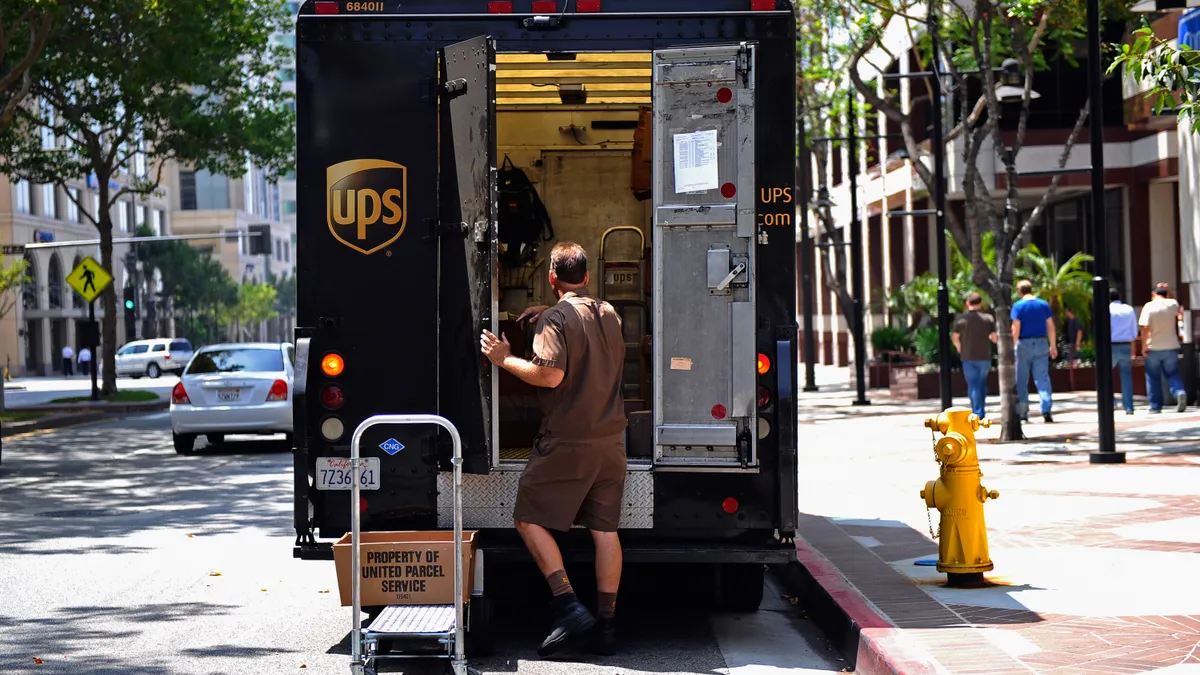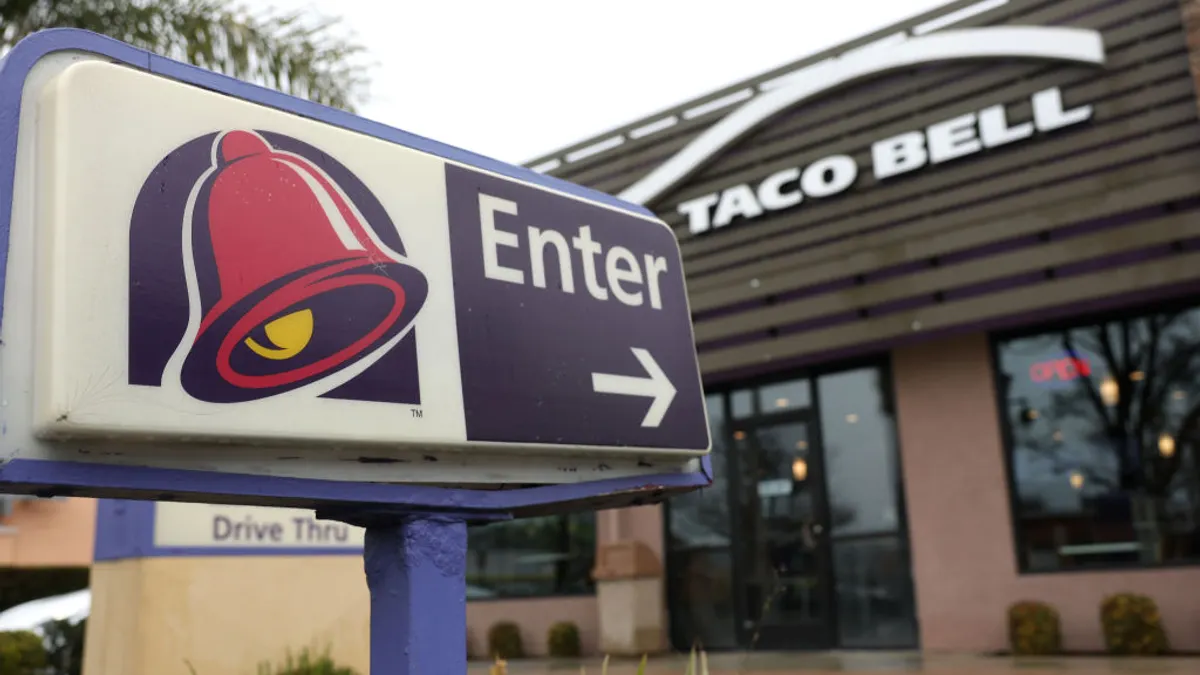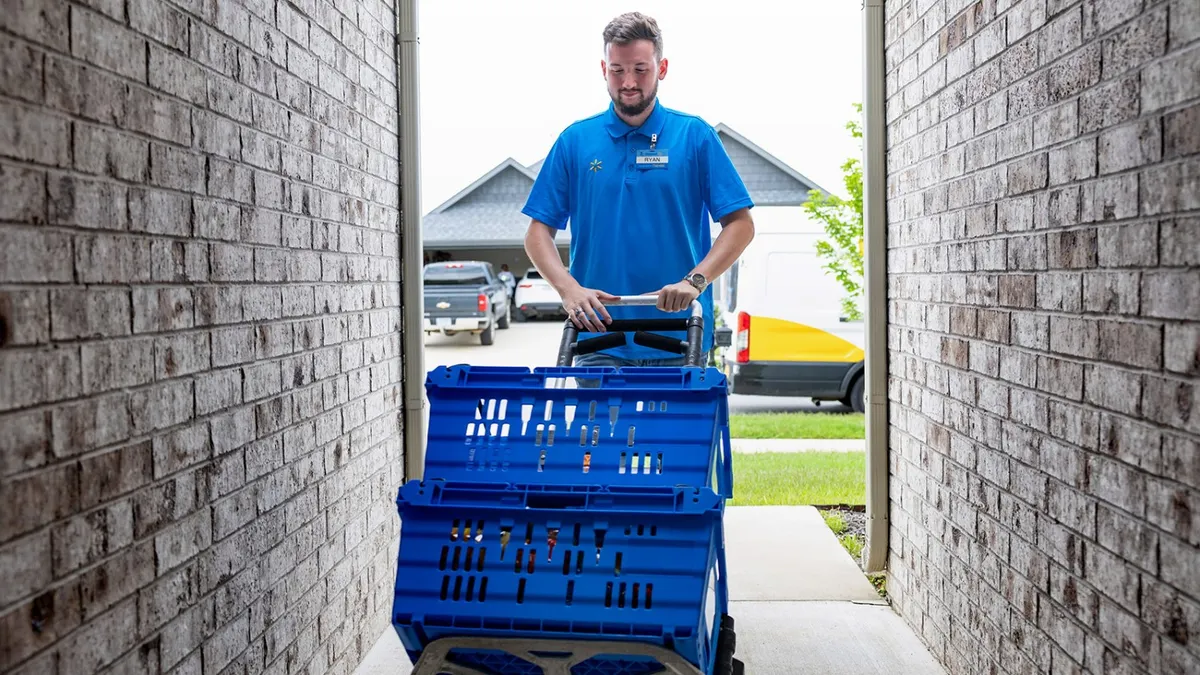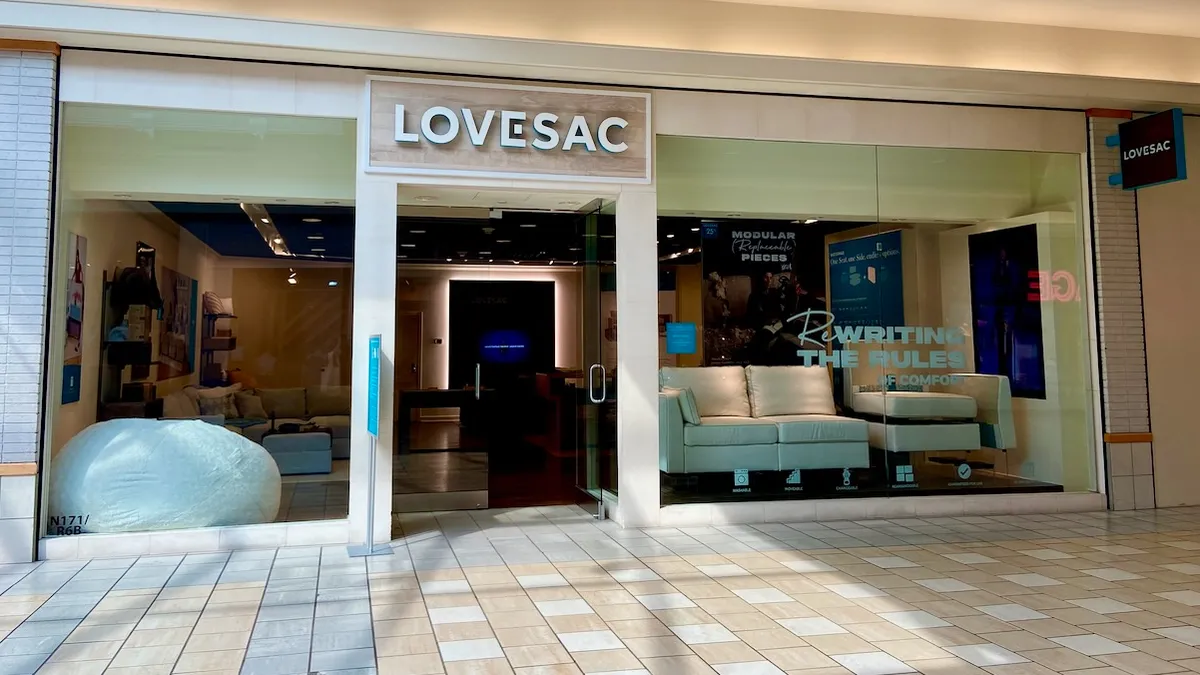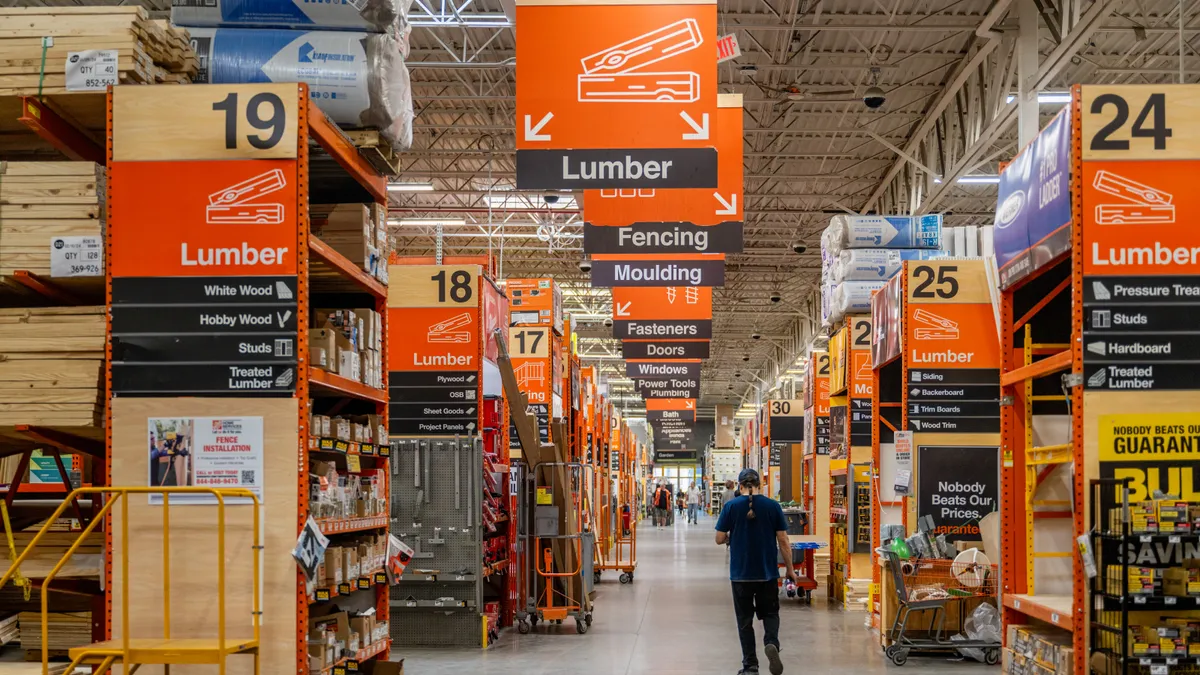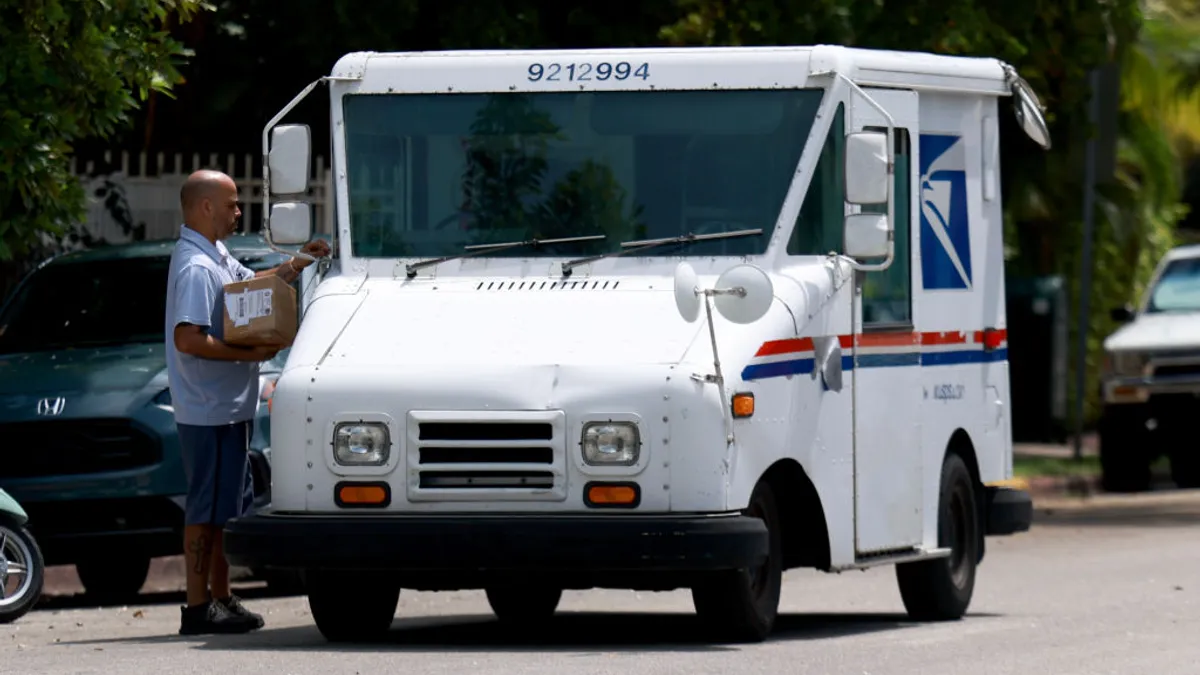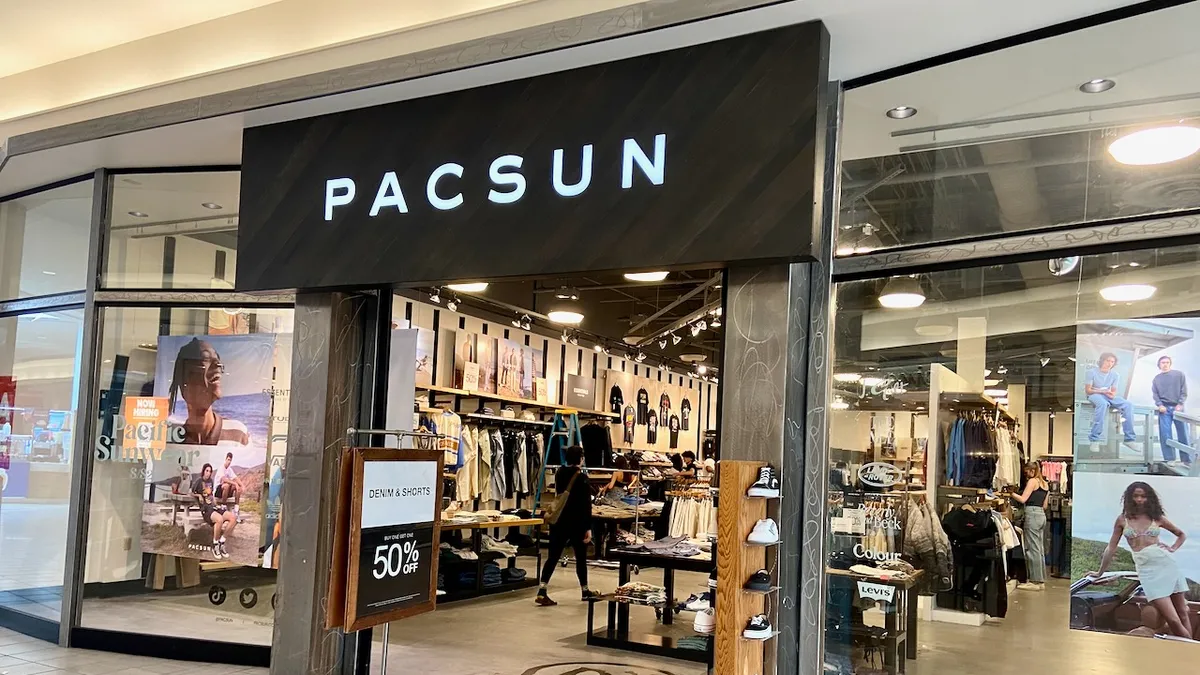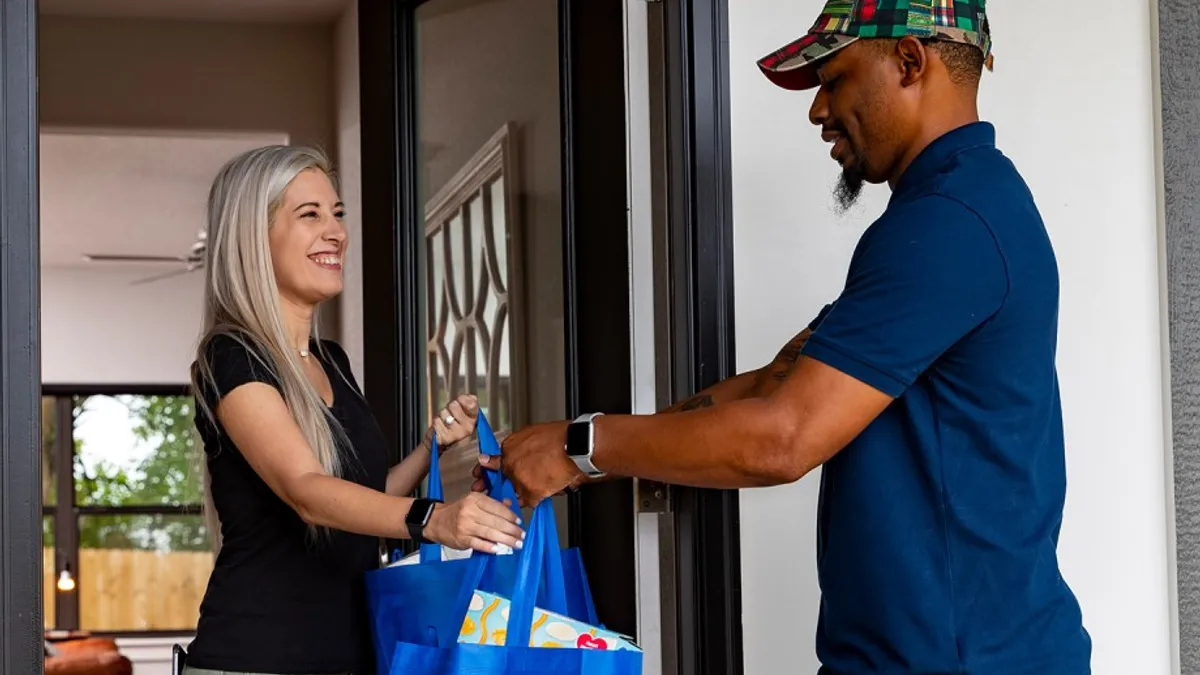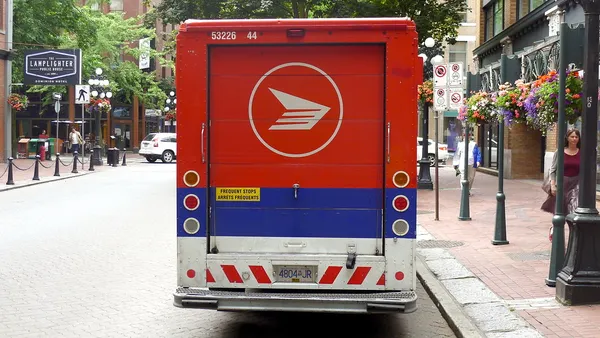UPS is seeking to improve its bottom line through employee buyouts, but the move could introduce service risks and strife with the International Brotherhood of Teamsters union, industry observers say.
The delivery giant is in the midst of voluntary buyout programs for full-time drivers, who are represented by the Teamsters, and select operations managers in the U.S. as it chases $3.5 billion in expense reductions this year.
Separations were slated to start Aug. 31 for drivers and Sept. 30 for managers. The company's aim is to match network staffing levels with an arranged reduction in volume from Amazon, a major customer.
"It's a clear sign that they don't see this volume coming back," said Jeremy Tancredi, a partner in West Monroe’s operations excellence practice and a former UPS industrial engineer.
The buyout incentive for drivers amounts to $1,800 per year of service with a minimum payout of $10,000, a move experts say aims to sway higher-paid veteran UPS employees to accept the offer. The payout could be a good deal for drivers nearing retirement but less so for other employees, said Alan Amling, an assistant professor of practice at the University of Tennessee and former VP of corporate strategy for UPS.
It's not UPS' first attempt to trim employee ranks in recent years. The company rolled out targeted cuts within management roles and contracted positions in 2024 as it adjusted to softening demand.
The rightsizing has continued this year, even before the buyouts began. From Q1 to Q2, the number of employees covered by UPS' national contract with the International Brotherhood of Teamsters dropped by 14,000 amid a wave of facility closures. The union's contract covers delivery drivers, package handlers and other employee groups powering the carrier's network.
UPS' Teamster-represented ranks decline
Buyout risks
UPS executives said on a July 29 earnings call that buyout interest among drivers was in line with the company’s expectations, although they did not share additional details. Meanwhile, with the program presenting further pressures to the Teamsters' membership, the union is pushing back and urging members to reject the offer.
"You're selling your soul and selling your brothers and sisters out if you take this buyout," Teamsters General President Sean O’Brien said on his "Better Bad Ideas" podcast last month.
As the program advances, one risk for UPS is the potential strain to longstanding customer relationships, according to Tancredi. For example, a new driver may not know a business prefers deliveries to be made in the back of the building, rather than the front.
But operational cracks were showing even before UPS' driver buyouts commenced, O'Brien said. The Teamsters leader said the buyout program is difficult for UPS to justify given the "massive overtime problem throughout this whole country," with drivers encountering up to 12-hour workdays to deliver all packages. The issue is leading to longer customer wait times for deliveries, according to O'Brien.
Hiring more drivers would limit the excessive overtime and help the carrier fulfill its national contract obligations for more full-time job opportunities, he added. The requirement calls on UPS to offer part-time workers the opportunity to fill at least 22,500 full-time openings.
“You’re selling your soul and selling your brothers and sisters out if you take this buyout.”

Sean O'Brien
General President, International Brotherhood of Teamsters
In an email to Supply Chain Dive, UPS did not address O’Brien’s overtime remarks but said it remains committed to providing high levels of service amid its network and staffing adjustments. UPS also said it is on pace to meet or exceed the staffing requirement in its national contract with the Teamsters.
For drivers still on board with the company, UPS may require more overtime to cover service gaps as the busy holiday season approaches, the University of Tennessee's Amling said. The company can hire seasonal support drivers during the peak season if its delivery needs aren't met by existing workers, per UPS’ contract with the Teamsters.
With UPS expecting its Amazon volume to decline over 50% by June 2026, the reported overtime reliance could dissipate. However, if UPS sees overall demand jump more than expected in future quarters, delays could become more likely as it works to expand capacity, experts said.
"While they are saving money, it's a lot easier to eliminate facilities and jobs in a downturn than it is to add facilities in an upturn and jobs," Amling said.
A partner in the overhaul
UPS could turn to the U.S. Postal Service, a longtime partner, to provide last-mile capacity while still reducing delivery costs, according to Mark Waverek, managing partner at PlaidMark Management and Consulting Services.
At the start of the year, the two carriers ended their SurePost delivery arrangement, in which UPS handed off some packages using the economy service to the Postal Service. But the two sides are discussing a potential reunion for SurePost — now named Ground Saver — as UPS grapples with unexpected costs from delivering all of that volume in-house.
"The [Teamsters] union did a great job of negotiating for the worker, but unfortunately, the costs are too high to serve the residential market," Waverek said. "So UPS needs an outlet, and they need a partner. And I think the post office would be a great partner.”
Editor's note: This story was first published in our Logistics Weekly newsletter. Sign up here.



